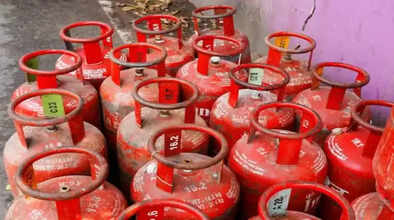Government Cuts Free LPG Cylinders Under PM Ujjwala Scheme to 9 Annually, Approves ₹30,000 Crore Payout to Oil Companies

In a major policy decision, the Union government has announced two significant changes impacting both oil marketing companies (OMCs) and beneficiaries of the Pradhan Mantri Ujjwala Yojana (PMUY). First, to offset the massive losses incurred by OMCs from selling LPG cylinders at prices lower than production costs, the government will provide a ₹30,000 crore compensation package. Second, the number of subsidized LPG cylinders provided under the PM Ujjwala Yojana has been reduced from 12 to 9 per year.
₹30,000 Crore Relief for Oil Companies
On Friday, the Union Cabinet approved a cash compensation package of ₹30,000 crore for Indian Oil Corporation (IOC), Bharat Petroleum Corporation Limited (BPCL), and Hindustan Petroleum Corporation Limited (HPCL). This payout will be made in 12 installments, with the first tranche expected to be released around September–October 2025.
According to official sources, ₹15,000 crore will be disbursed in the current financial year (FY2026) and the remaining ₹15,000 crore in FY2027 through allocations in the new budget, scheduled for February 2026.
The decision to pay in installments, rather than in a single lump sum, is aimed at managing the fiscal deficit more effectively. Estimates suggest that paying the entire amount upfront could raise the fiscal deficit by eight basis points. By splitting the payment across two fiscal years, the financial impact on the government’s budget will be significantly reduced. The government is targeting a fiscal deficit of 4.4% of GDP for FY2026.
Impact on PM Ujjwala Yojana Beneficiaries
While the number of subsidized cylinders under PMUY has been cut to nine per year, the subsidy amount remains unchanged. The Cabinet has approved a budget allocation of ₹12,060 crore for the scheme in FY2026 and retained the subsidy of ₹300 per 14.2 kg cylinder.
This means that while households will now receive fewer subsidized refills annually, the per-cylinder financial relief will continue as before.
Consumption Trends Under PMUY
Government data shows that LPG consumption among PMUY households has improved over the years. In FY2020, the average consumption was around three refills per household per year. By FY2025, this had risen to approximately 4.47 refills per household annually.
The scheme, launched in 2016, aims to provide clean cooking fuel to economically weaker households, replacing the use of firewood, coal, and other polluting fuels. While the cut in cylinder numbers may slightly impact total annual supply per family, the continued subsidy is expected to keep LPG accessible for low-income households.
Why the Changes Were Made
The move to reduce the number of subsidized cylinders is likely part of a broader fiscal management strategy. By slightly limiting the total subsidy outflow while maintaining per-cylinder benefits, the government aims to balance social welfare commitments with budgetary constraints.
For oil companies, the compensation is critical to ensuring financial stability. Selling LPG at below-market prices has led to mounting losses for OMCs in recent years, driven by rising global energy prices and currency fluctuations. The government’s relief package will help these companies recover and maintain uninterrupted supply to consumers.
Key Takeaways
-
OMC Relief: ₹30,000 crore payout to IOC, BPCL, and HPCL in 12 installments.
-
PMUY Change: Subsidized cylinders reduced from 12 to 9 annually.
-
Subsidy Status: ₹300 per cylinder subsidy remains unchanged.
-
Fiscal Management: Payment split to minimize impact on fiscal deficit.
-
Consumption Growth: PMUY households now average 4.47 refills per year, up from 3 in FY2020.
With these changes, the government aims to strike a balance between supporting oil companies, maintaining affordable cooking gas for the poor, and managing fiscal health. The coming months will reveal how these adjustments impact both the LPG market and household consumption patterns.

